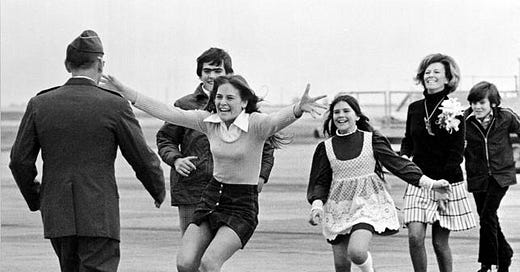During the Vietnam War (1955-1975), 776 American service members were captured and held as prisoners by North Vietnamese forces. The conditions in which they were held were often harsh, with POWs enduring physical and psychological hardships.
Operation Homecoming was the result of painstaking negotiations between the United States and North Vietnam. The Paris Peace Accords, signed on January 27, 1973, paved the way for the release of American POWs. The operation officially began on February 12, 1973, and continued until March 29, 1973. Over 590 American POWs returned home during this period, welcomed with a sense of relief and gratitude.
A series of flights, known as the "Hanoi Taxi," transported the released servicemen to Clark Air Base in the Philippines, where they underwent medical evaluations and were later reunited with their families.
While Operation Homecoming successfully brought the majority of POWs back home, the issue of Missing in Action (MIA) persisted. 1,577 Americans are now listed by the Defense POW/MIA Accounting Agency (DPAA) as missing and unaccounted-for from the Vietnam War: Vietnam - 1,237; Laos–285; Cambodia-48; Peoples Republic of China territorial waters–7. Efforts to locate and identify these missing individuals continue to this day, with organizations like the Defense POW/MIA Accounting Agency (DPAA) leading the charge.
The challenges in locating MIAs are numerous, ranging from incomplete or conflicting records to the complex geography of Vietnam. Despite advancements in technology, the process remains arduous. However, the commitment to bringing closure to families and honoring the memory of those still missing remains steadfast.





